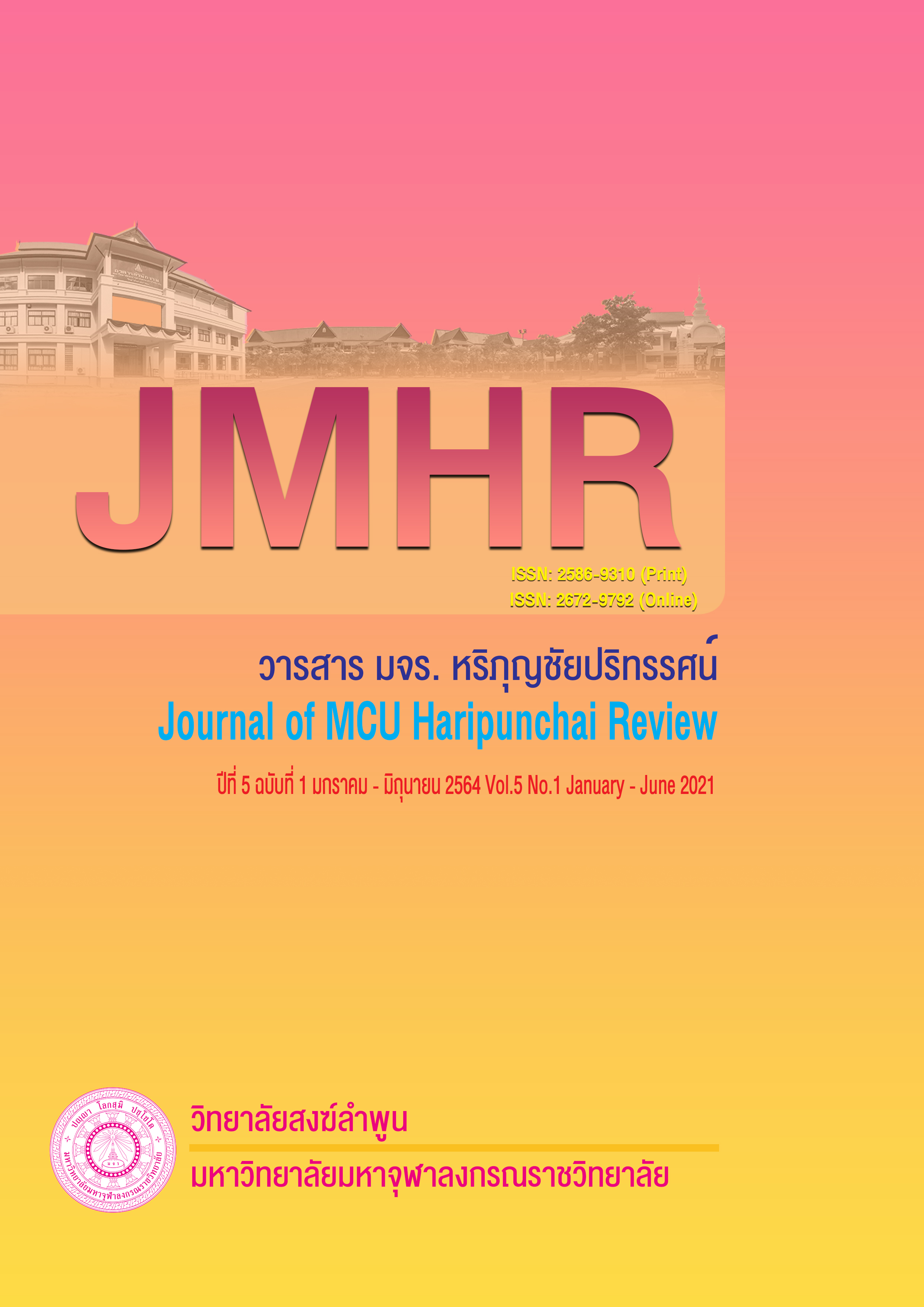A Study on Lanna Buddhist Beliefs on Lantern Offering and Merit
Main Article Content
Abstract
This study is a qualitative research. This thesis has three objectives: 1) to study the beliefs of offering lantern in Buddhism; 2) to study the beliefs of offering lantern in Lanna, and 3) to analyze the Dhamma contents in belief of offering lantern of the Buddhists in Lanna.
Lantern means the sacrifice in Buddhism which is the igniter leading to the light it has been influenced by Brahminism in India. The offering of lantern is believed that it is the offering to pay respect to Triple Gem, worshiping the Buddha's footprint on the bank of the Nammanthanee River in India, and it is also a homage to Phra Ket Kaew Chulamanee that enshrined in the Tavatimsa Heaven and is still believed to be worshiping the Lord Buddha on the day of his return from the world. Lanna people have faith in offering lantern from literature that inscribed on the palm leaves called Dhamma. The Dhamma mentioned the ceremony for offering lantern there are two scriptures, including Dhamma Ka Phuak that has the belief of worshiping gratitude and Dhamma’s benefits of the lantern offering. Dhamma content that appears in the beliefs of offering lanterns of Buddhists in Lanna, including 1) the principle of worship because the offering lanterns that is Amisa puja in Buddhism which resulted in the practice of worship as well, 2) the principle of gratitude because the offering lantern is a symbol of gratitude that appears in the story of Mae Ka Phuak, and 3) the principle of belief because the offering lantern is an expression of the deep faith in Buddhism of the Lanna people. In addition, the offering lantern is also valuable in terms of being traditionally good which expresses the identity of the Lanna people and has been interested in tourism, cultural conservation, Promotion of Buddhism affecting the economic growth as well.
Article Details
References
บุญมี แท่นแก้ว. (2546). ประวัติศาสตร์ต่างปรัชญาธรรม. กรุงเทพมหานครมหานคร: โอเดียนสโตร์
พระอุดรคณาธิการ (ชวินทร์ สระคำ). (2534). ประวัติศาสตร์พระพุทธศาสนาในอินเดีย. พิมพ์ครั้งที่ ๒ กรุงเทพมหานคร:โรงพิมพ์มหาจุฬาลงกรราชวิทยาลัย.
พระครูไพศาลธรรมานุสิฐ (ถนอม ภิญโญจิต). (2546).“การศึกษาเปรียบเทียบตัวอย่างการให้ทานในพระสุตตันตปิฎกกับการปฏิบัติในลำพูน”. วิทยานิพนธ์พุทธศาสตร์มหาบัณฑิต สาขาวิชาพระพุทธศาสนา. บัณฑิตวิทยาลัย: มหาวิทยาลัยมหาจุฬาลงกรณราชวิทยาลัย.
มหาจุฬาลงกรณราชวิทยาลัย. (2535). พระไตปิฎกภาษาบาลีฉบับมหาจุฬาเตปิฏกํ 2500. กรุงเทพมหานคร: โรงพิมพ์มหาจุฬาลงกรณราชวิทยาลัย.
_________. (2539).พระไตรปิฎกภาษาไทย ฉบับมหาจุฬาลงกรณราชวิทยาลัย. กรุงเทพมหานคร: โรงพิมพ์ มหาจุฬาลงกรณราชวิทยาลัย.
สุจิตต์ วงษ์เทศ และคณะ. (2558). ลอยกระทง เรือพระราชพิธี วัฒนธรรมน้ำร่วมราก. กรุงเทพมหานคร : ห.จ.ก. โรงพิมพ์อักษรไทย.


